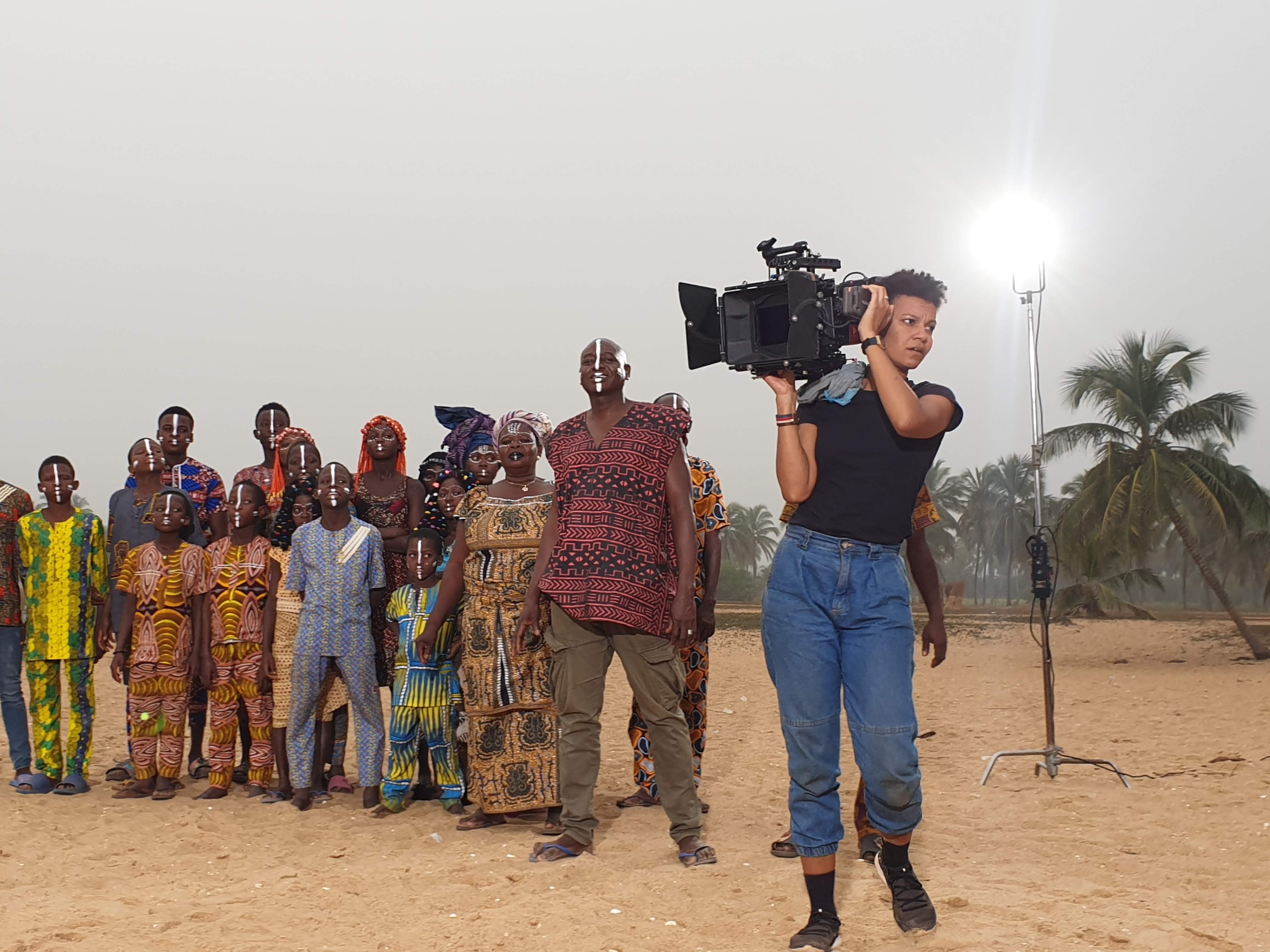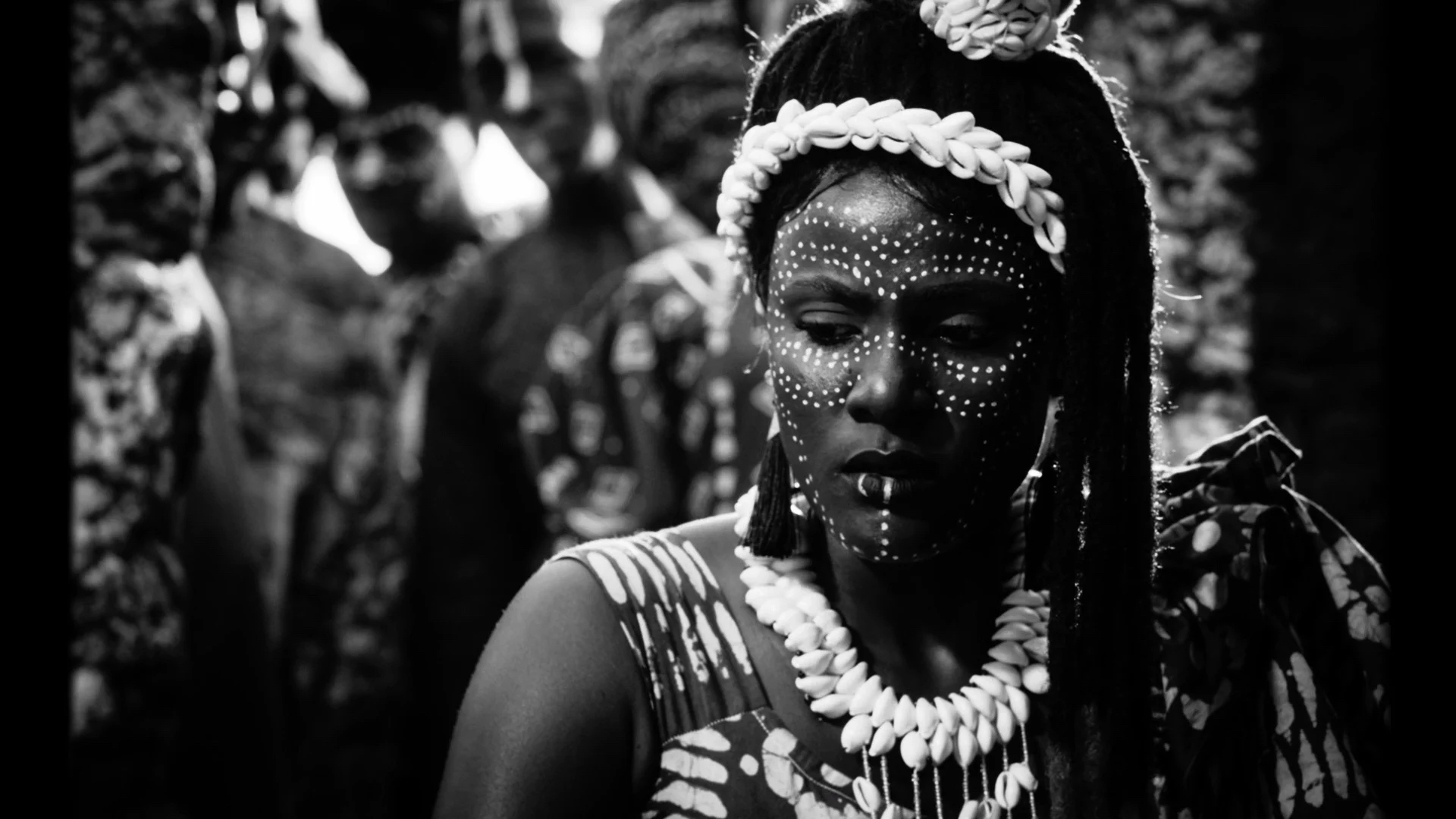![]()
 Afro-Brazilian cinematographer Lílis Soares has been repeatedly honored for her filmmaking which vibrantly seeks to subvert bias in representation and gaze. Premiering at the 2023 Sundance Film Festival, Mami Wata, from Nigerian director CJ Obasi, is a narrative reimagining of the titular Mami Wata Orisha (spirit) from African mythology. The film tells the story of a woman acting as intermediary between the people of her village and the all-powerful water deity. Soares used ZEISS CP.3 lenses to help capture the intimate and startling details of the black and white film, garnering her the Sundance World Cinema Dramatic Special Jury Award for Cinematography.
Afro-Brazilian cinematographer Lílis Soares has been repeatedly honored for her filmmaking which vibrantly seeks to subvert bias in representation and gaze. Premiering at the 2023 Sundance Film Festival, Mami Wata, from Nigerian director CJ Obasi, is a narrative reimagining of the titular Mami Wata Orisha (spirit) from African mythology. The film tells the story of a woman acting as intermediary between the people of her village and the all-powerful water deity. Soares used ZEISS CP.3 lenses to help capture the intimate and startling details of the black and white film, garnering her the Sundance World Cinema Dramatic Special Jury Award for Cinematography.
Production on Mami Wata was not without challenges. The film began shooting on location in West Africa in 2021, following supply chain disruptions caused by COVID-19. Soares describes, “I had a long list of equipment, but one week before the equipment was due to arrive, the rental house said, ‘We can’t fill the order anymore.’ Here I was in Africa, but I didn’t have equipment.” The gear, including an Alexa with ZEISS CP.3 lenses, finally arrived on New Year’s Eve, the last day of 2020. “We tested the equipment for the first time that night and went to set the next morning. We had a huge delay with principal photography, but I made the most of the extra pre-production; it let me write out all my work and prepare for all the problems that could happen on set.”
 Soares carefully chose the ZEISS CP.3 lenses to pair with her Alexa camera body. “I needed lenses that could give me details and depth to work with in post-production.” Mami Wata is remarkable for its startling depth and layers of shaded contrast drawn out of the black and white format. “I chose the ZEISS CP.3 lenses because they could give me details and a clean image. I don’t like shooting black and white when we have a lot of shades of gray. I like to work with deep blacks and whites. For me, the gray should be a dark gray, so my camera needed to capture details in the light. It’s not just the tool, you must think about the technique, the narrative, and what you want to have in your result,” she advises. “I didn’t have time (on set) to put any big lights up. So instead, I put the actors in good positions, and then I took the camera with me, and I would run and run, handholding the image.”
Soares carefully chose the ZEISS CP.3 lenses to pair with her Alexa camera body. “I needed lenses that could give me details and depth to work with in post-production.” Mami Wata is remarkable for its startling depth and layers of shaded contrast drawn out of the black and white format. “I chose the ZEISS CP.3 lenses because they could give me details and a clean image. I don’t like shooting black and white when we have a lot of shades of gray. I like to work with deep blacks and whites. For me, the gray should be a dark gray, so my camera needed to capture details in the light. It’s not just the tool, you must think about the technique, the narrative, and what you want to have in your result,” she advises. “I didn’t have time (on set) to put any big lights up. So instead, I put the actors in good positions, and then I took the camera with me, and I would run and run, handholding the image.”
Soares and Obasi had a strong vision for the film, with an objective to subvert existing representation and cast new codes for their characters. “We didn’t have a particular reference for Mami Wata because a lot of movies that I like lack a representation of Black skin,” Soares says. “In the history of cinema, other movies in black and white mostly focus on white people. On Mami Wata we needed to try and change this gaze, to try and put more value in these bodies we portray.” On screen representation is central to Soares’ filmmaking. “I have shot five feature movies and four of the movies are with Black skin. I received an award in Brazil because of my depiction of Black skin. For me, with Mami Wata, I tried to create something new and tried to represent these people with value. Maybe someone will watch the movie and feel something new.”
 Given the constraints of production and budget, Soares was meticulous about selecting tools to meet the film’s thematic goals. “It’s about the skin and texture of skin–the black skin. When you see a black body, there is something specific in this body, in this skin. I want to retain this level of detail and I needed lenses that would see this skin in such detail, as if you could touch it. If there had been a lot of distortion from the lens, maybe I couldn’t have achieved this.”
Given the constraints of production and budget, Soares was meticulous about selecting tools to meet the film’s thematic goals. “It’s about the skin and texture of skin–the black skin. When you see a black body, there is something specific in this body, in this skin. I want to retain this level of detail and I needed lenses that would see this skin in such detail, as if you could touch it. If there had been a lot of distortion from the lens, maybe I couldn’t have achieved this.”
Working within limitations bred surprising moments of inspiration on set. “There were many moments in this movie, where everything fell into place. At one point in the film, I said, ‘I will try to make this woman like Jesus.’ I had one spot (light) behind her head, to create a halo, like a Christ-figure. I held the camera in my hands as she turned, turned, and turned. It was perfect. This is an important image in this movie because the audience can feel everything in her face. You see meaning in the texture and the detail of her eyes.”
She describes another instance: “I asked the crew to run in front of the light, to create shadow effects on the floor. It was like a canvas. We had a character standing there on this canvas and it looked very artistic as the lights moved and changed. The effect was made by the crew, ten people just running in front of the light. We found a way to be creative within the limits.”
The filming of Mami Wata and its subsequent reception deeply impacted the cinematographer. “I have a lot of things to talk about because it was me, my body there, and now I’m here to talk to you about this movie. I learned I am so strong,” Soares laughs. “My colleagues, the crew, would look at me always and ask, ‘Man, how did you do this?’ But if I have just one opportunity, I will take ahold of it and use it to make another opportunity and another. I know we don’t have a lot of women like me in this position. So maybe what I do can open other’s minds. In the future, I hope soon, I will have others like me in this industry. I hope we can work together and changes ideas. We (women) are not small. We know there are a lot of very strong women. We just want to work.
“Sometimes, all we need is a jumping off point,” Soares concludes. “We need to have this representation on screen to start. We need to create new histories within our history.” Mami Wata continues through the festival circuit, following its Sundance Film Festival Grand Jury nomination for World Cinema-Dramatic Feature, and Special Jury Award for Cinematography. The film swept at FESPACO (Panafrican Film and Television Festival of Ouagadougou) receiving the Prix de la Critique (African Critics Award), Meilleur Image (Cinematography Award) and Meilleur Décor (Set Design Award).
To read the full interview: https://lenspire.zeiss.com/cine/en/article/cinematographer-lilis-soares-captures-the-details-in-mami-wata